by Petar Meseldzija
wonderful impressions, memories, photographs, inspiration and a wish to return
to Altoona the next year
very successful show for me. I saw many beautiful and inspiring artworks, had
wonderful conversations with many fellow artists and visitors (it’s pity I did
not have enough time to speak with more of them), made some new friends, sold
some paintings, drawings and many books, and I even had my first public lecture
and painting demo during this amazing event. It was truly unforgettable and I
will surely be back the next year.
observation that “…The one biggest drawback to this event is that it is not
long enough!…”
Jeannie Wilshire, who have put together yet another impeccable show; to Morgan
and Jean Bantly, our most dear friends and wonderful people, who selflessly
helped us in so many different ways; to my dear fellow artists and friends
Donato Giancola, Justin Gerard, Dan Dos Santos, Jesper Ejsing, Daren Bader,
Raoul Vitale, Garry Lippincott, Eric Fortune, Thomas Kuebler, Omar Rayyan, Marc
Fishman and Mark Harchar, who inspired me with their art, thoughts and insights;
to Gregg Spatz who is a first class art collector and a great guy, to the kind
people who bought my “Giants – Bull Fight” painting; and to Katie Langford, for
a wonderful present!
kind to visit our booth, to buy a book and to talk to us and express your
feelings and thoughts about art we had on our display. It’s much appreciated! I
have certainly enjoyed every and each conversation.
not present at my Illuxcon lecture, but might be interested in what I had to
say during the presentation, I am offering you the written version of this
lecture. You can find the first part of it at the bottom of this post. The
second part will follow in a day or two.
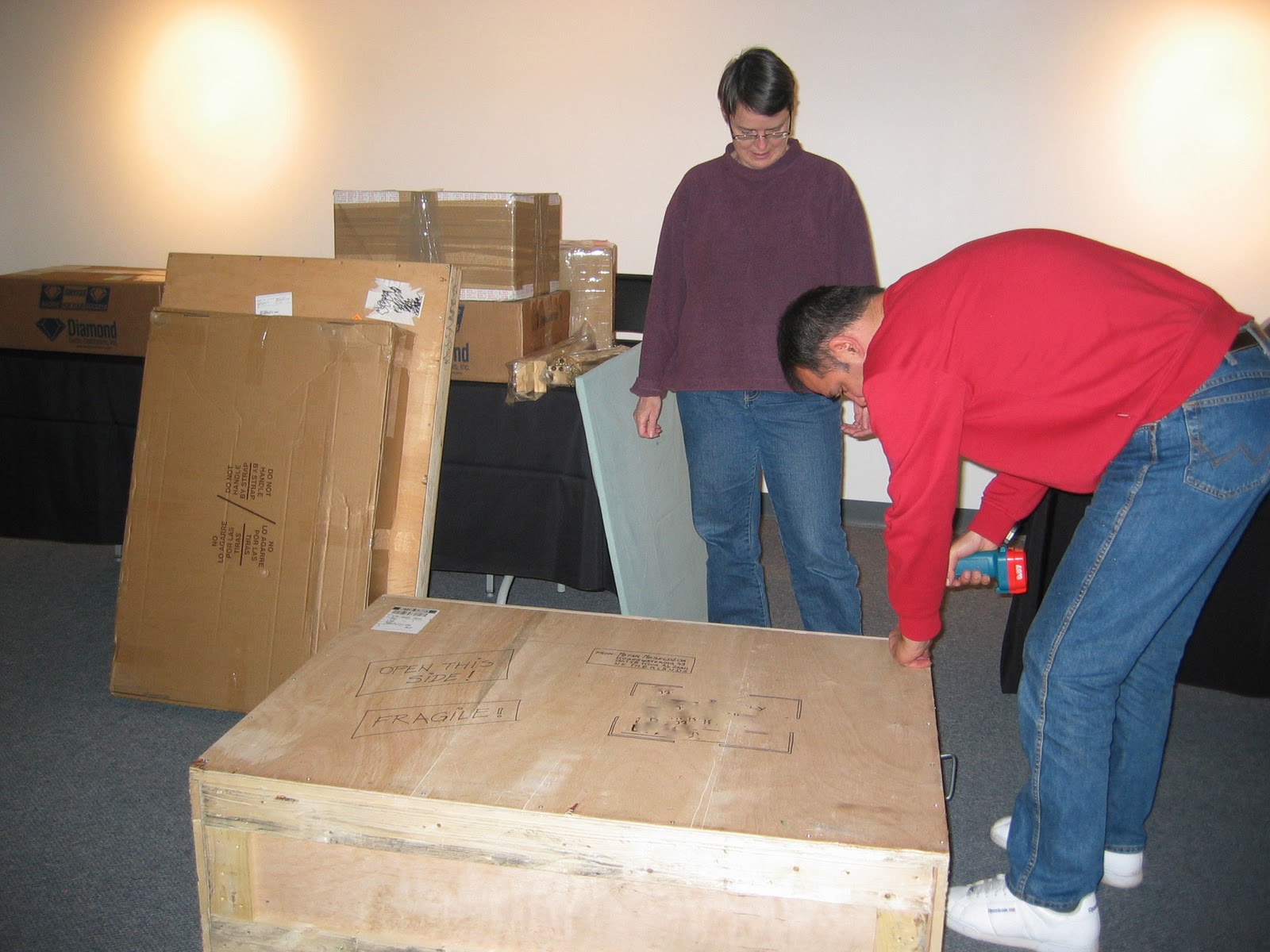 |
| Opening the crate full of paintings, with Jean Bantly |
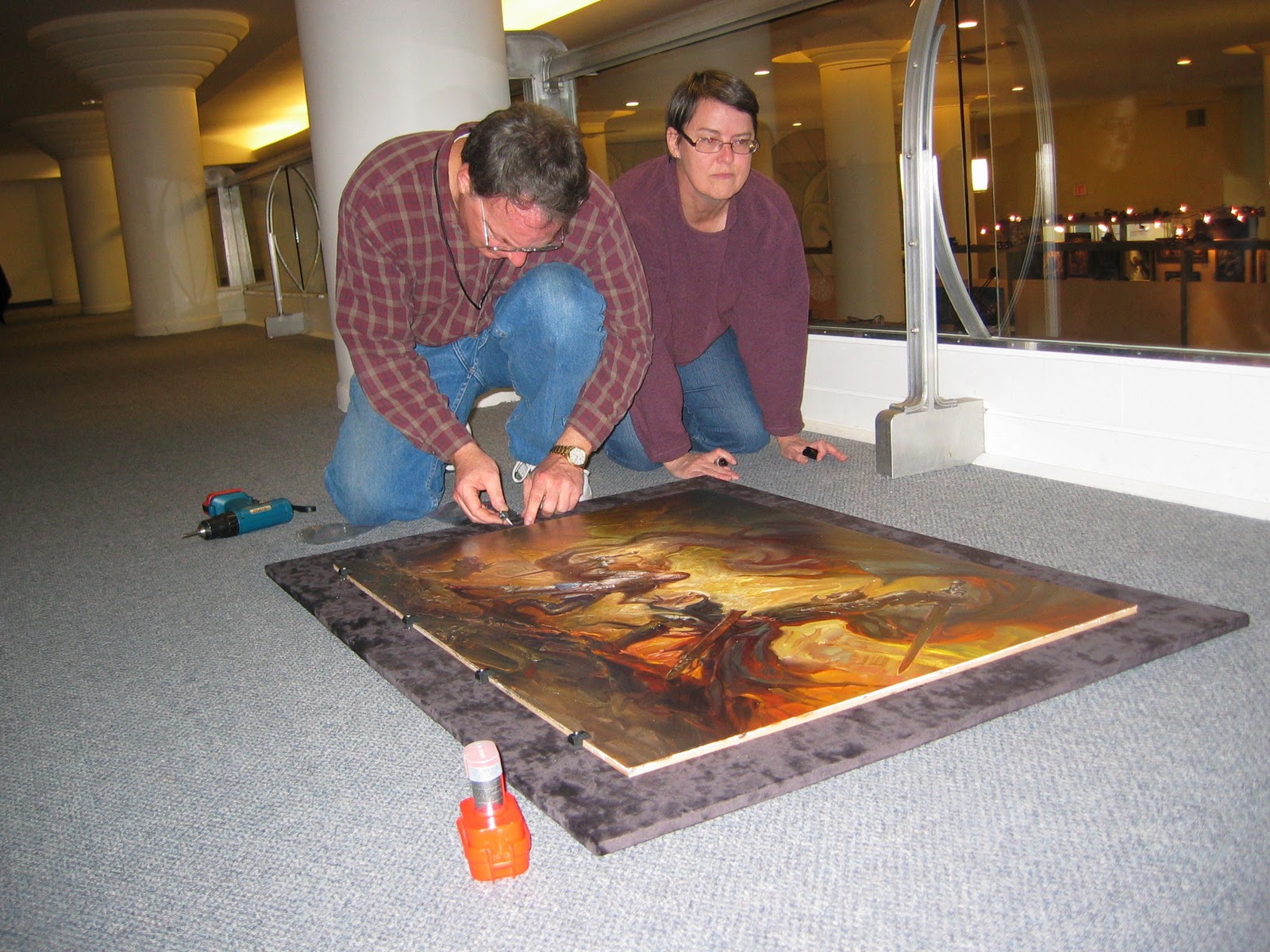 |
| Morgan and Jean Bantly “framing” the Eowyn painting |
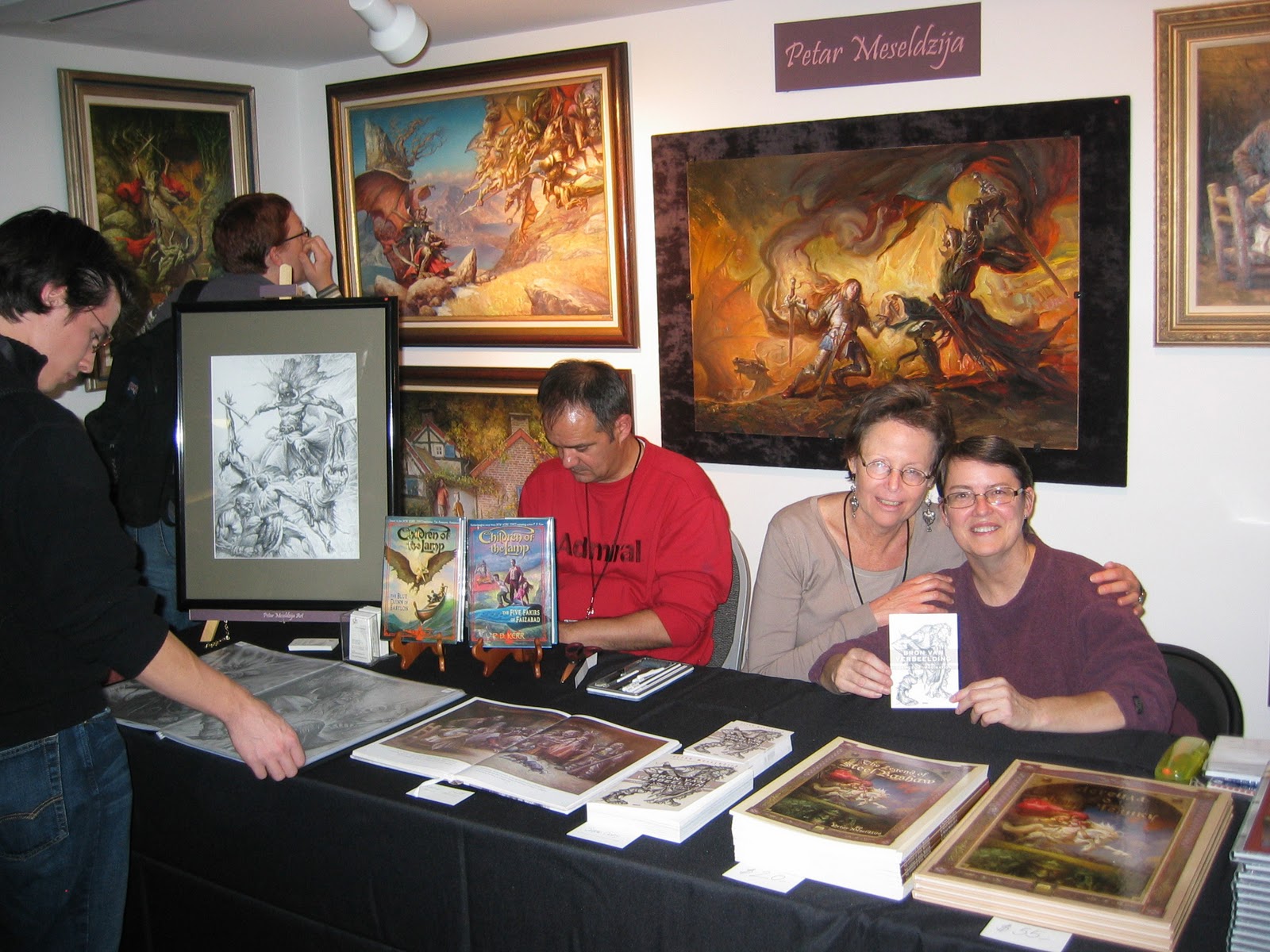 |
| Our booth, with Anita and Jean |
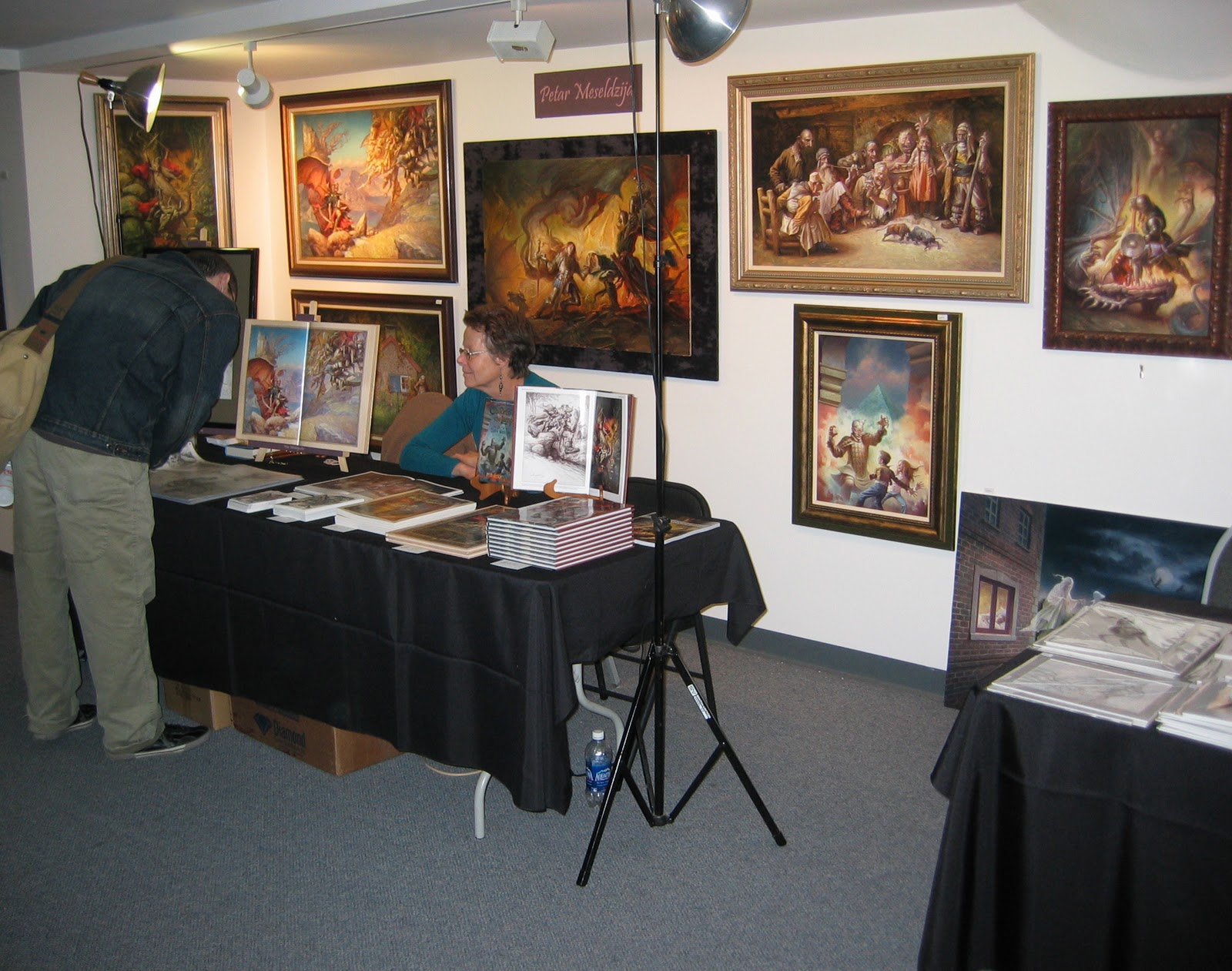 |
| Anita, my wife, faithful companion and my invaluable assistent, watching over our booth |
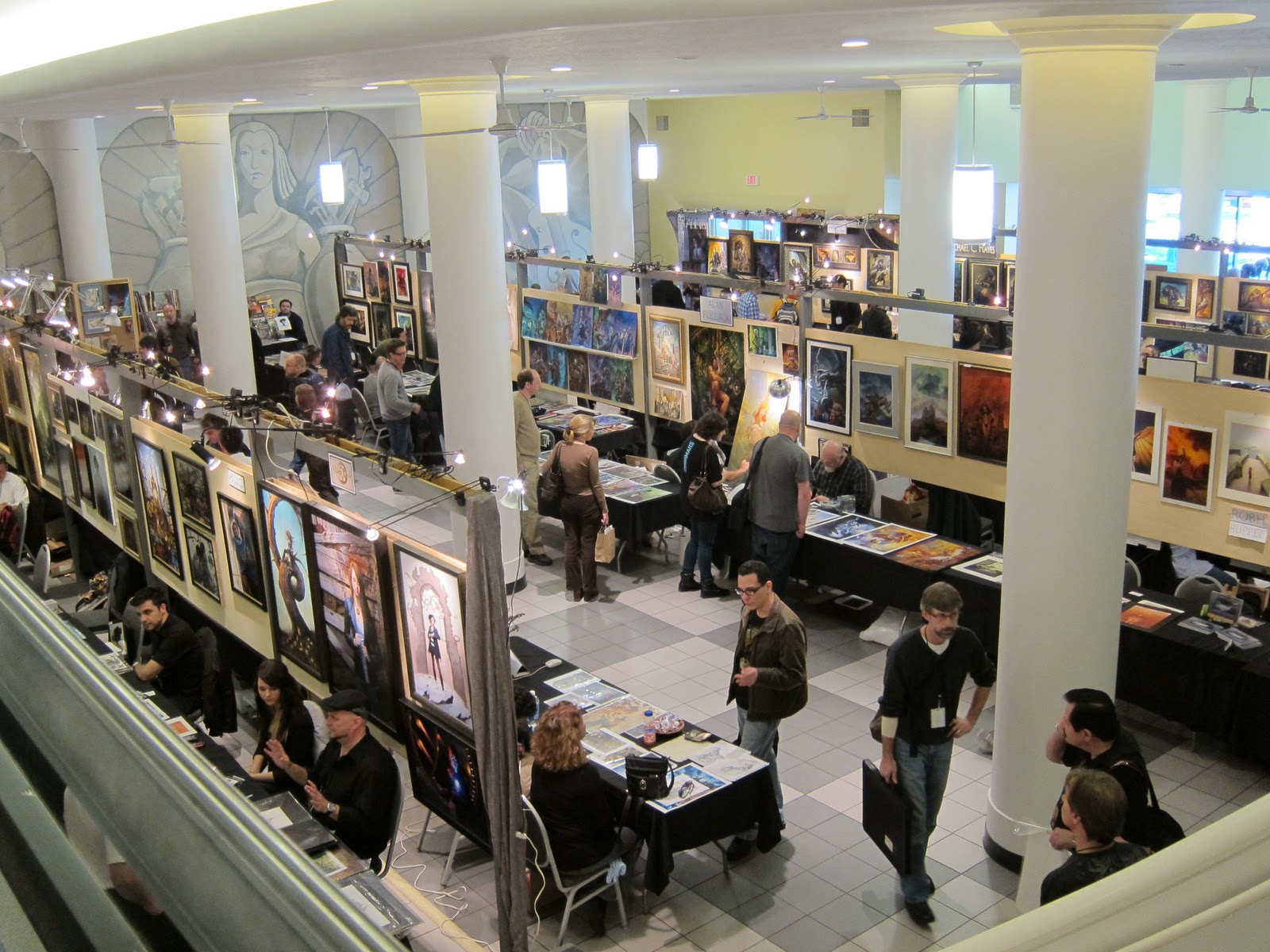 |
| The show seen from the balcony |
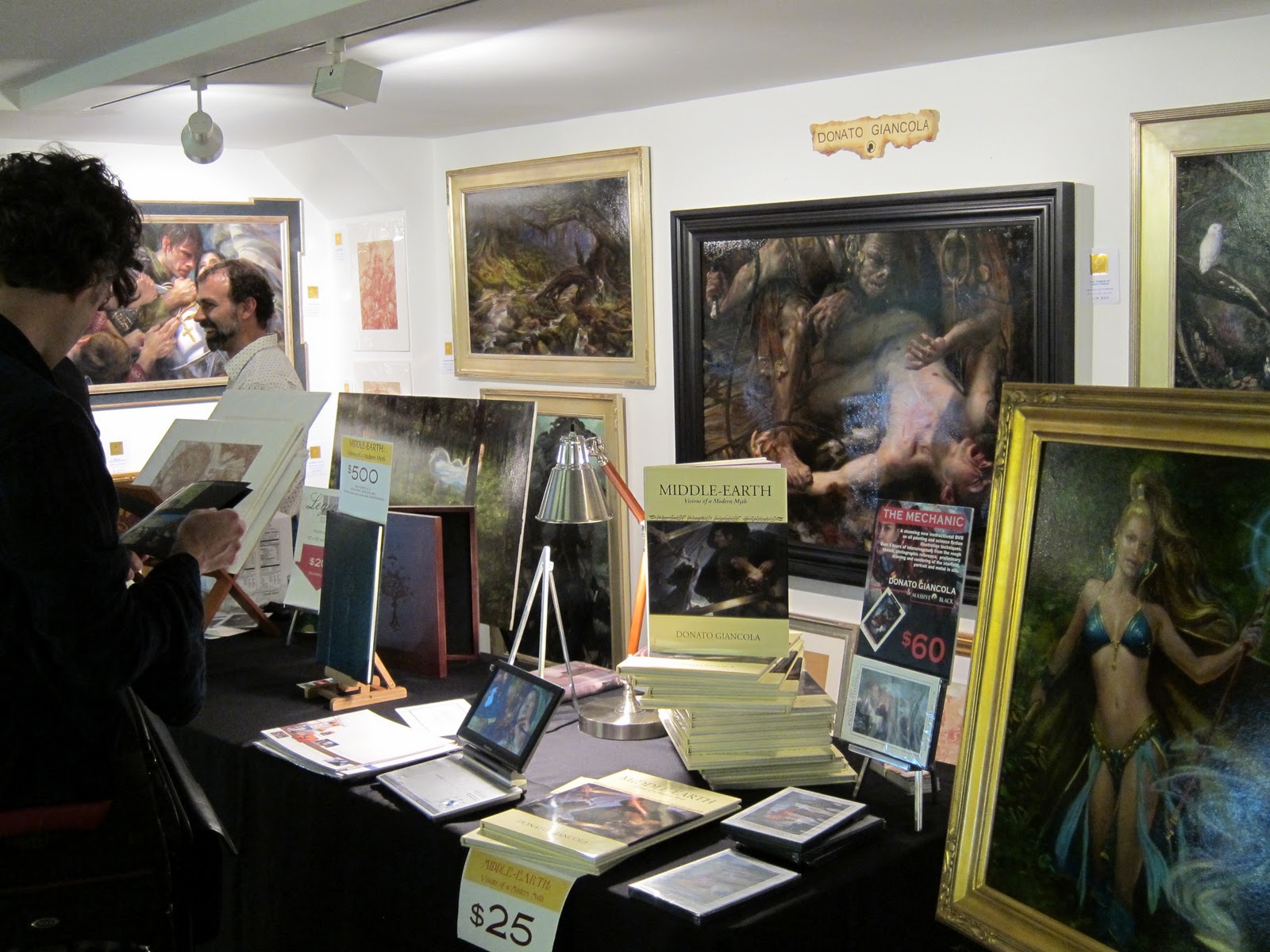 |
| Donato Giancola’s booth |
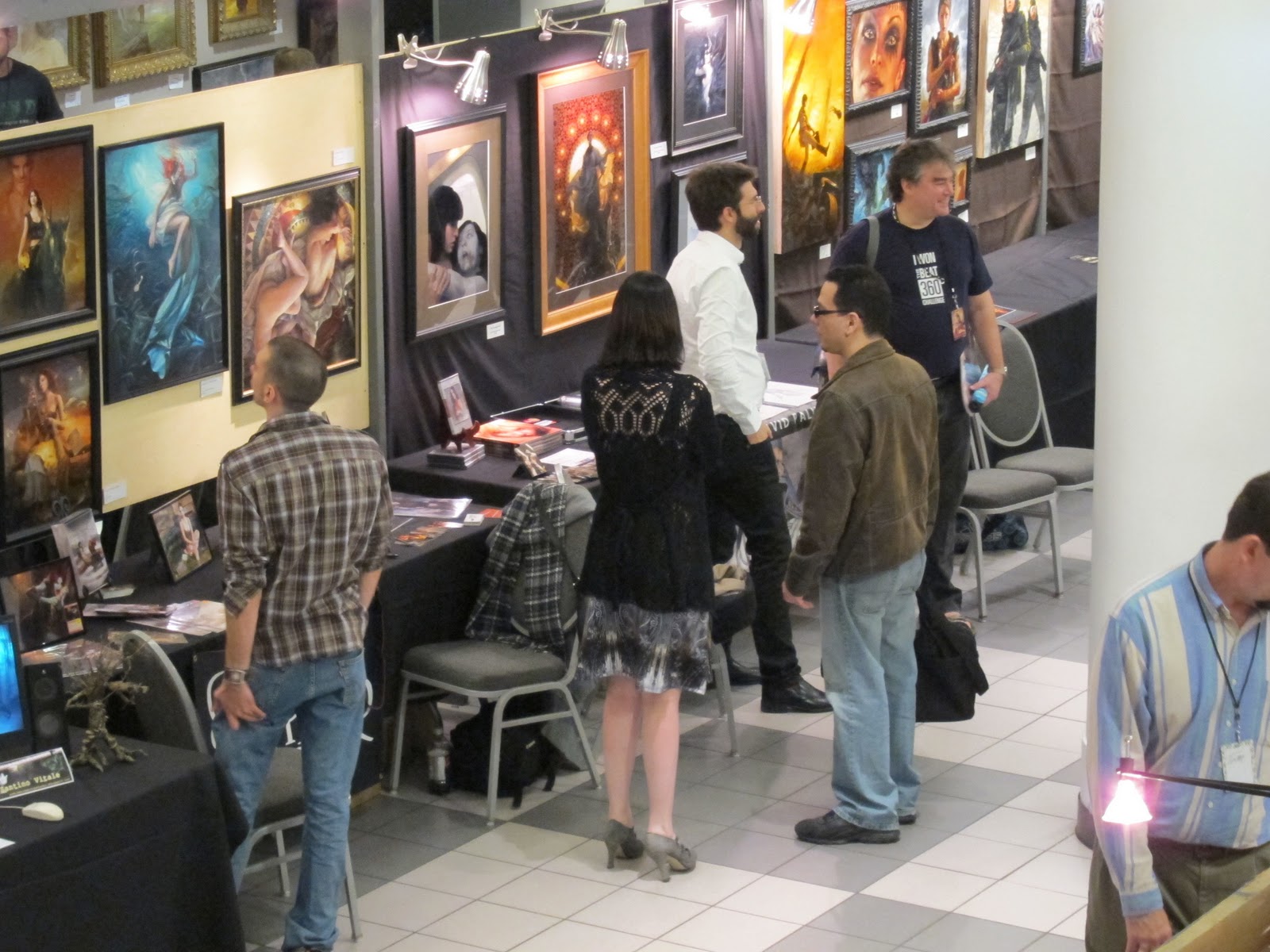 |
| A part of the exhibit |
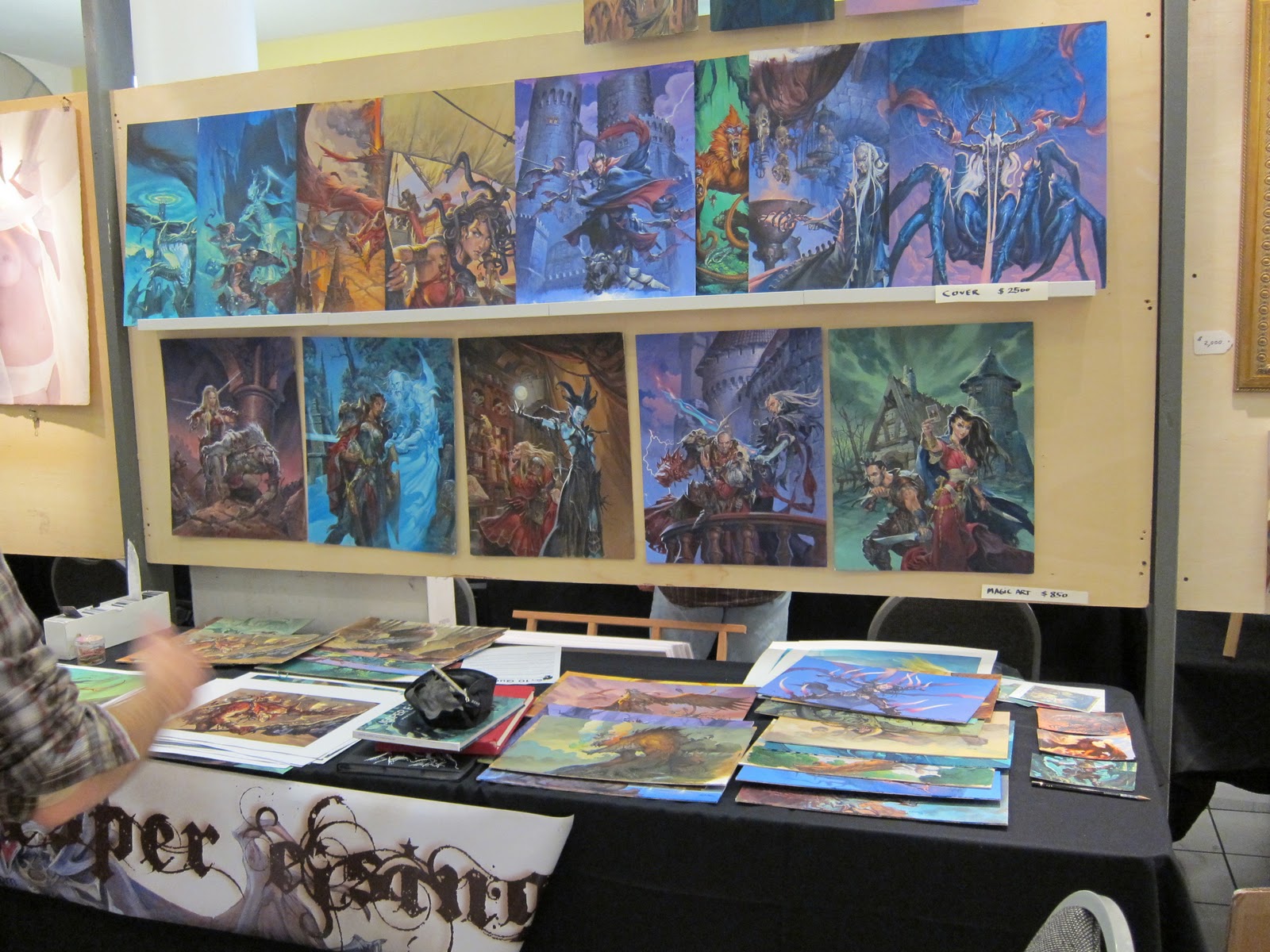 |
| Jesper Ejsing’s booth |
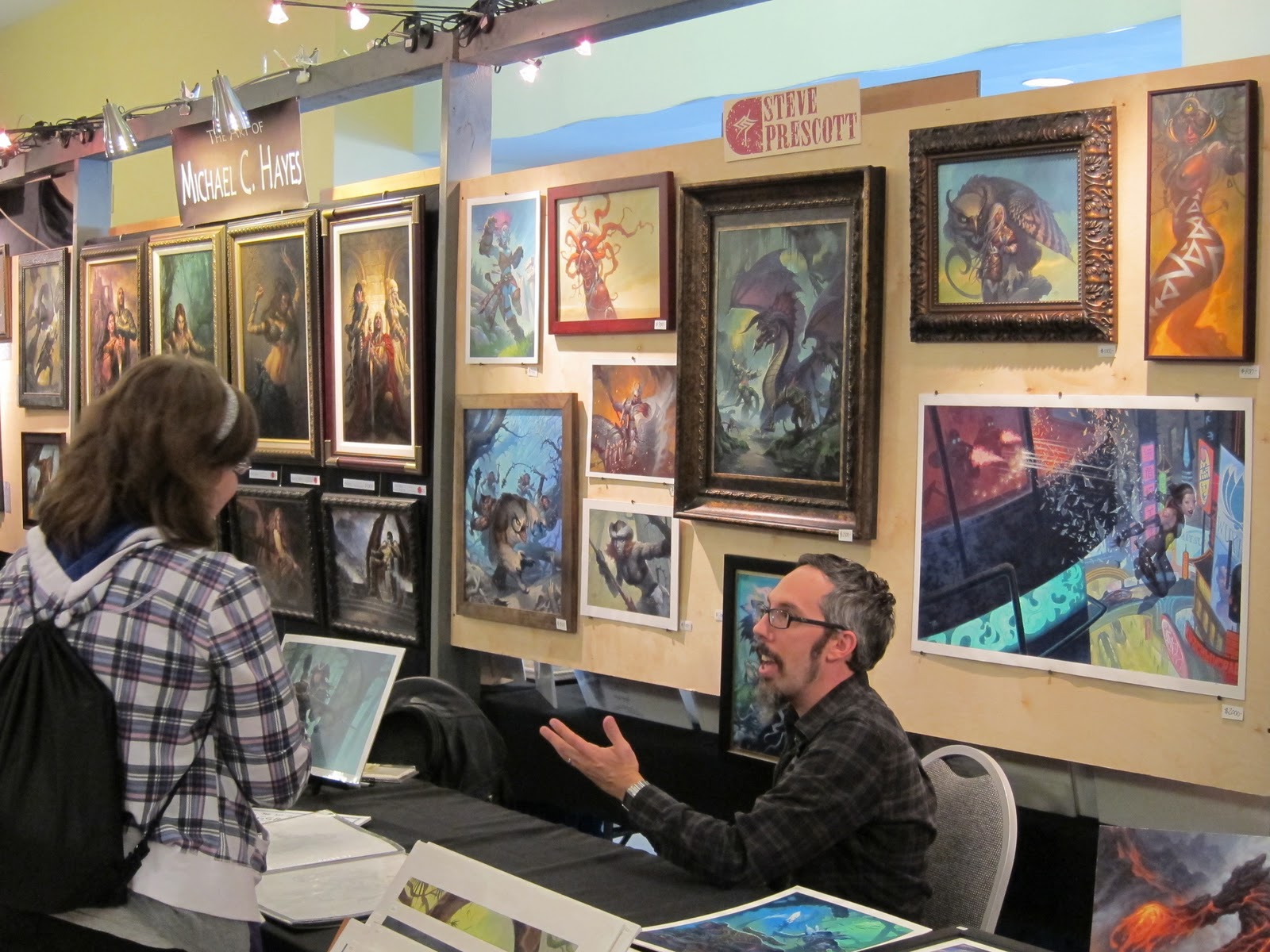 |
| Steve Prescott at his booth |
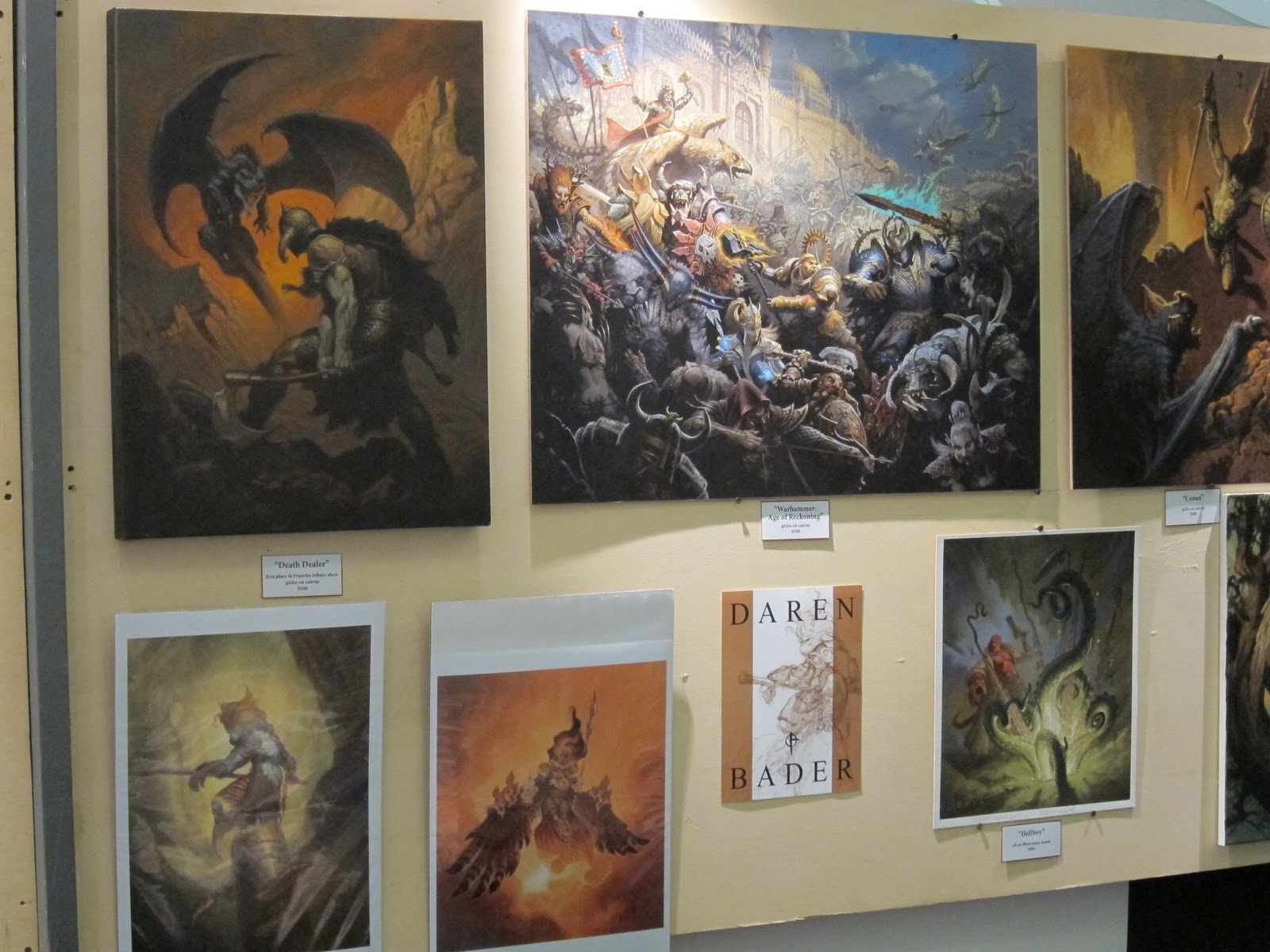 |
| Daren Bader’s booth |
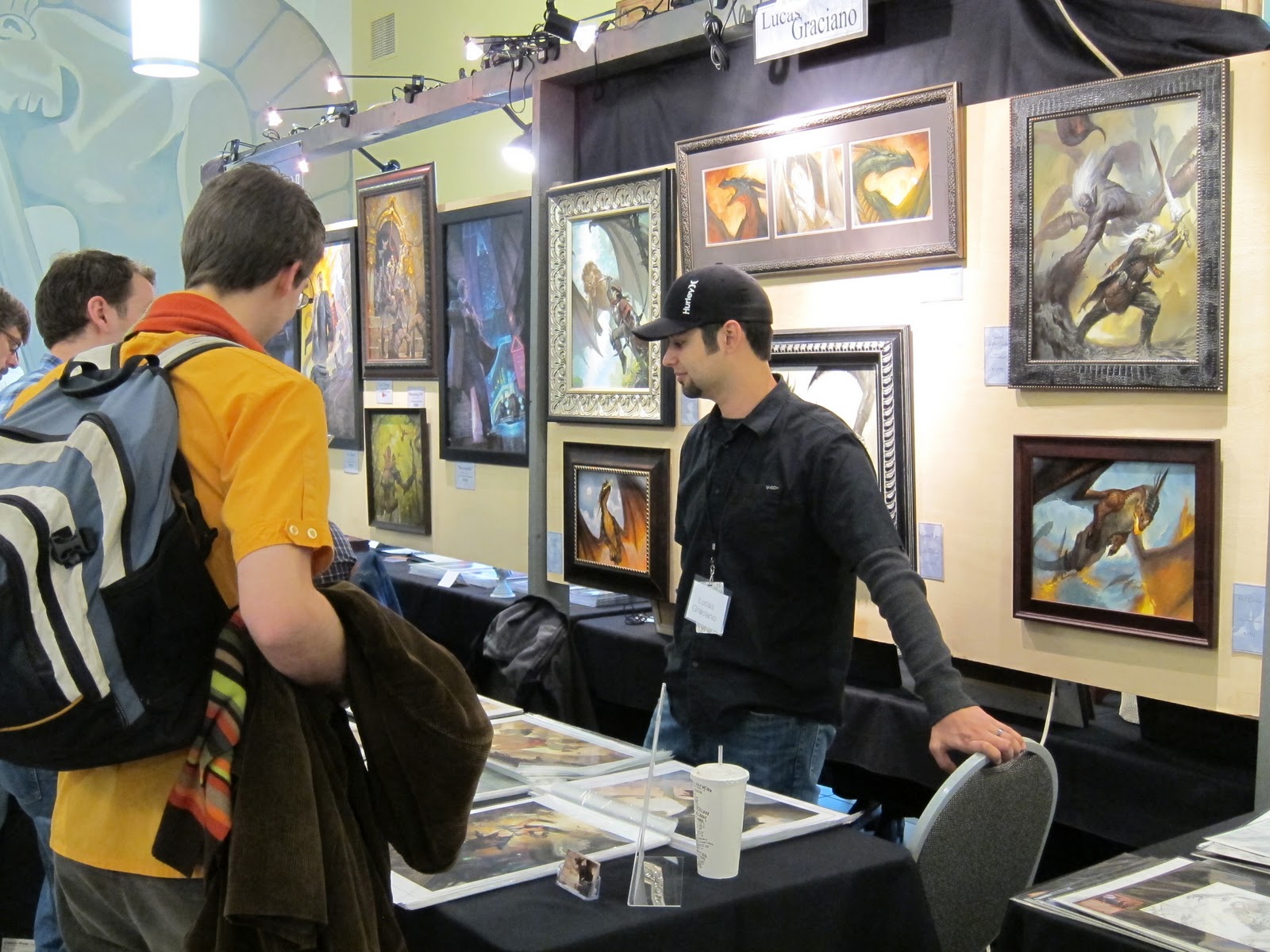 |
| Lucas Graciano at his booth |
 |
| Raoul Vitale, with his son and wife, at his booth |
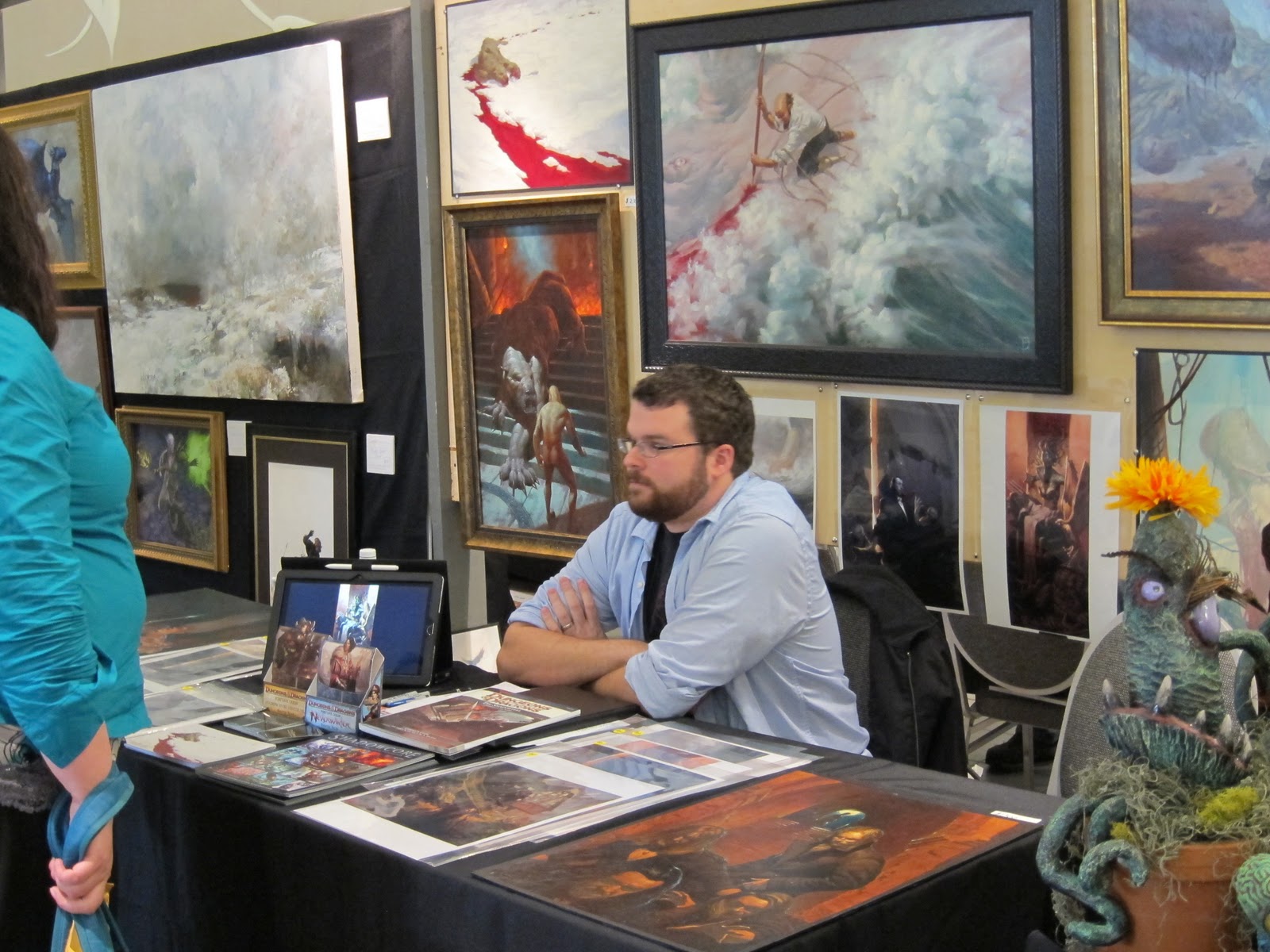 |
| Tyler Jacobson at his booth |
 |
| Anita and Jean talking to Omar Rayyan |
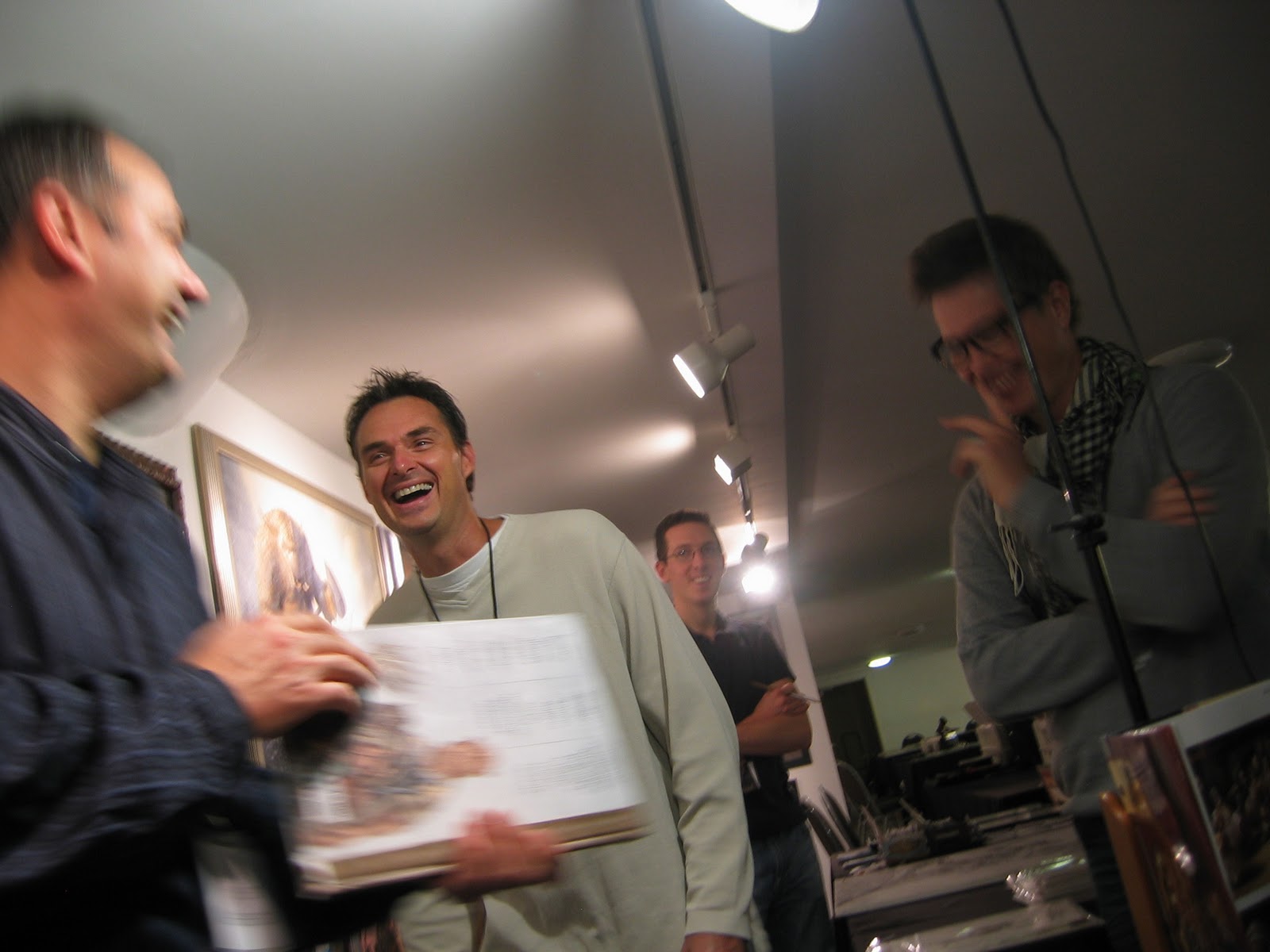 |
| Somebody made a good joke, with Daren Bader, Jesper Ejsing and Ryan Pancoast in the background |
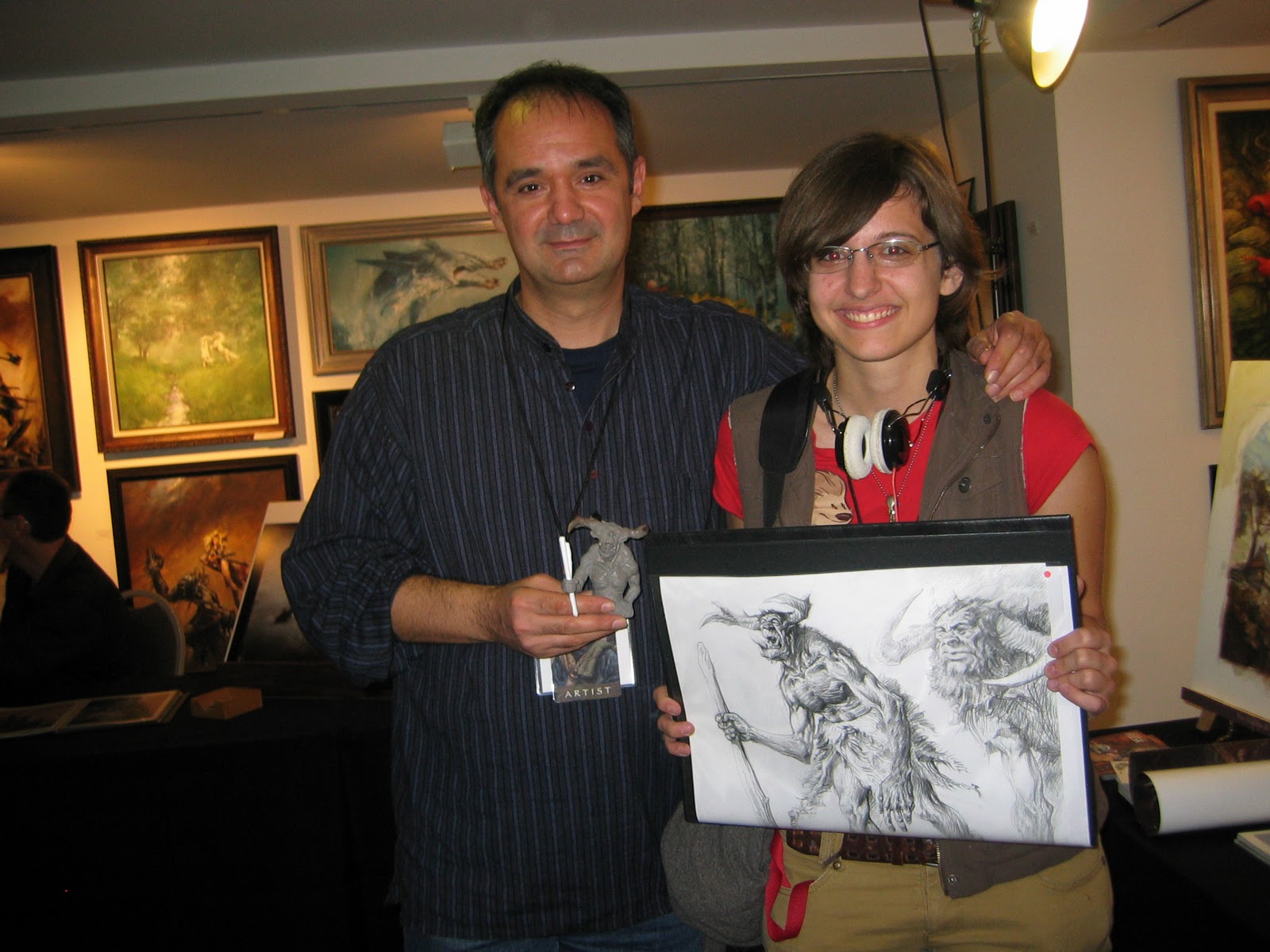 |
| With Katie Langford and her amazing giant present |
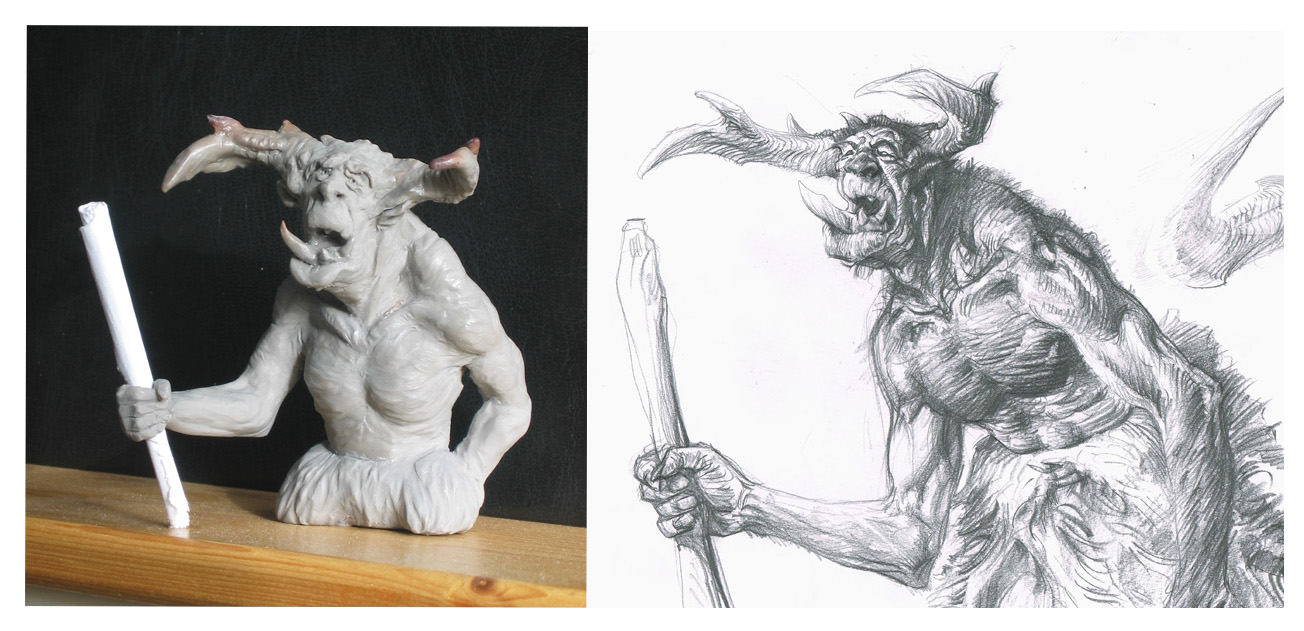 |
| Katie’s giant and her 2D model |
Illuxcon Lecture, part 1
philosopher, writer and mathematician who spent most of his adult life in the
Dutch Republic. He has been dubbed the father of modern philosophy, and
much subsequent western philosophy is a response to his writings, which are studied
closely to this day. Descartes was one
of the key figures in the Scientific Revolution.
this ingenious idea, which greatly influenced the thinking of the modern era,
and therefore defined our own approach to life, the human being and of course
art. But as we know, thinking, or ratio, is not all we have or need in life.
So, I say – I feel, therefore I am.
complex emotions define a human being perhaps more than any other aspect of
him. People need emotions in order to connect, and because
Art is created by people, Art needs emotion to connect with people.
like food without taste. I don’t want
to marginalize the importance of an idea in Art, but I believe that the emotion is more essential.
Generally speaking most of us react more to emotions than to ideas. Even when
an idea is very appealing to us, it is in fact the emotion that goes with the
particular idea, that draws our attention toward that idea. In a great piece of
art, emotion is what touches us deeply and moves us profoundly.
unless it has been proven in practice. Therefore a question that present itself
is how do we infuse our artwork with emotion?
parts, or stages:
paint. A nice example of this identification with the subject matter is to be found
among the icon painters.
liturgical function. Although a product of art, its function, first of all, is
to allow contact between the transcendental world and our own material world.
Some call the icons the windows through which the inhabitants of the
transcendental worlds look at us. On the other hand, these painted “windows”
help us to get in contact with the transcendental level of existance. So, a
painter of icons is a monk whose function is to be the medium between these two
worlds. Therefore it is expected from him to submerge himself in the religious
life and to become as “clean” as possible, in the spiritual sense, so that the
information that comes from above to us through him, or through his icon, is as
clean and as pure as possible. He prepares himself by prayer and meditation, in
order to align himself spiritually with the transcendental, and to perform his
task properly.
we might be astonished by the similarities between an icon painter and the
usual “true” artist ( by true artist I mean the artist who lives his art very
much like a good monk who lives his religion.)
getting in contact with, or even temporarily becoming the subject, the artist
wants to depict in his artwork. This is a crucial point in making art, and good
art in particular. Art is conceived from within first. It exists in the spirit
and needs material means, like the paint or the art technique, to express
itself in the material world. So, the art technique is a tool, or a medium,
through which Art is incarnated in our world. However, all of us here have,
at least once, encountered a painting that is brilliant on the surface
(technically brilliant) but somewhat hollow from inside.
many, they are interconnected and entangled, and it is not that easy to define
the borders between them.
right perspective. Technique is extremely important simply because it
represents the bridge between the world of ideas (emotions) and the material
world. But art doesn’t reside in technique only.
painting before you start your work. Make conscious contact between the painting
and your past experiences with the subject matter you paint, as much as
possible. Go back to the source of inspiration.
listen to the music that helps me stay in contact with the source of inspiration, or source of
emotion (Nikolai Rimsky-Korsakov, Edward Grieg, Antonin Dvorak or Alexander
Borodin, especially his pieces like Prince Igor –Polovetsian Dance, or
In the Steppes of Central Asia).
try to recall my childhood or youth memories of, for
instance, big trees, forests, rivers, faces, certain situations, etc., and the
emotions that went with them (I meditate and contemplate on these subject
matters)
create the most vivid pictures, and I start seeing them when I close my eyes
(partly) on its own.
without restraint through the chosen technique you have to master this
technique first. These days there are many books, web sites and blogs that can
help you to achieve this goal. Just choose the most appealing master, or
technique, and practice hard. After 10 to 20 years, depending upon your talent
and how hard you work, you will become a master in your own right and be able
to express your emotions freely and without restraint, focusing only on the
expression through your technique. But beware of the trap; if you linger too
long on technique, you might never make the step towards the free expression
in your art.
most of the time is that while we are developing our
technical skills, we also develop our expression and gradually become
cognitive of our own path, who we are and what we want to achieve as an artist.
Only, in the beginning the emphasis is on learning and developing the technical
skills, unless you have chosen a form of artistic expression wherein the
technique doesn’t play an important role. But now, I am mostly referring to the
illustration art.


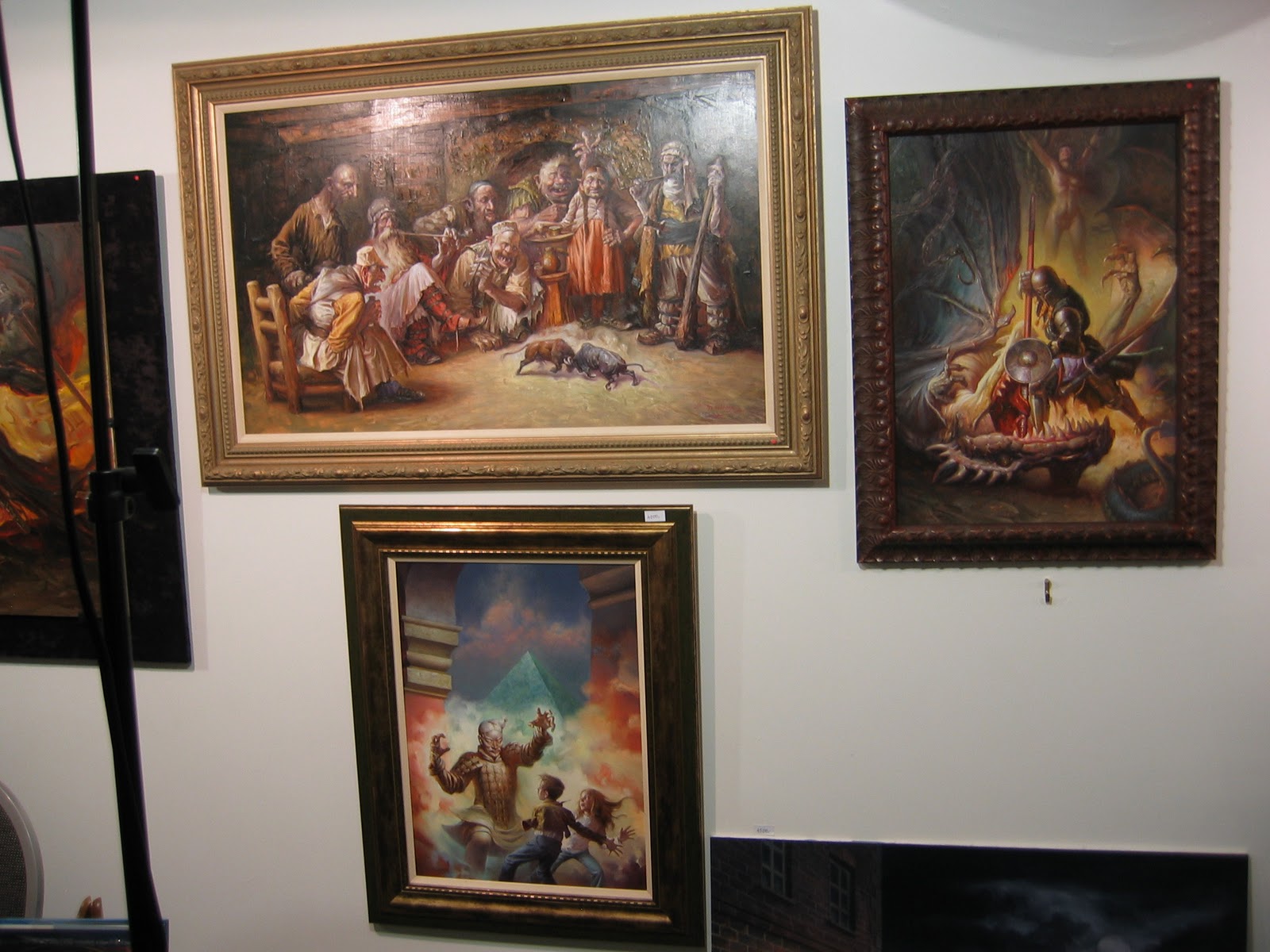
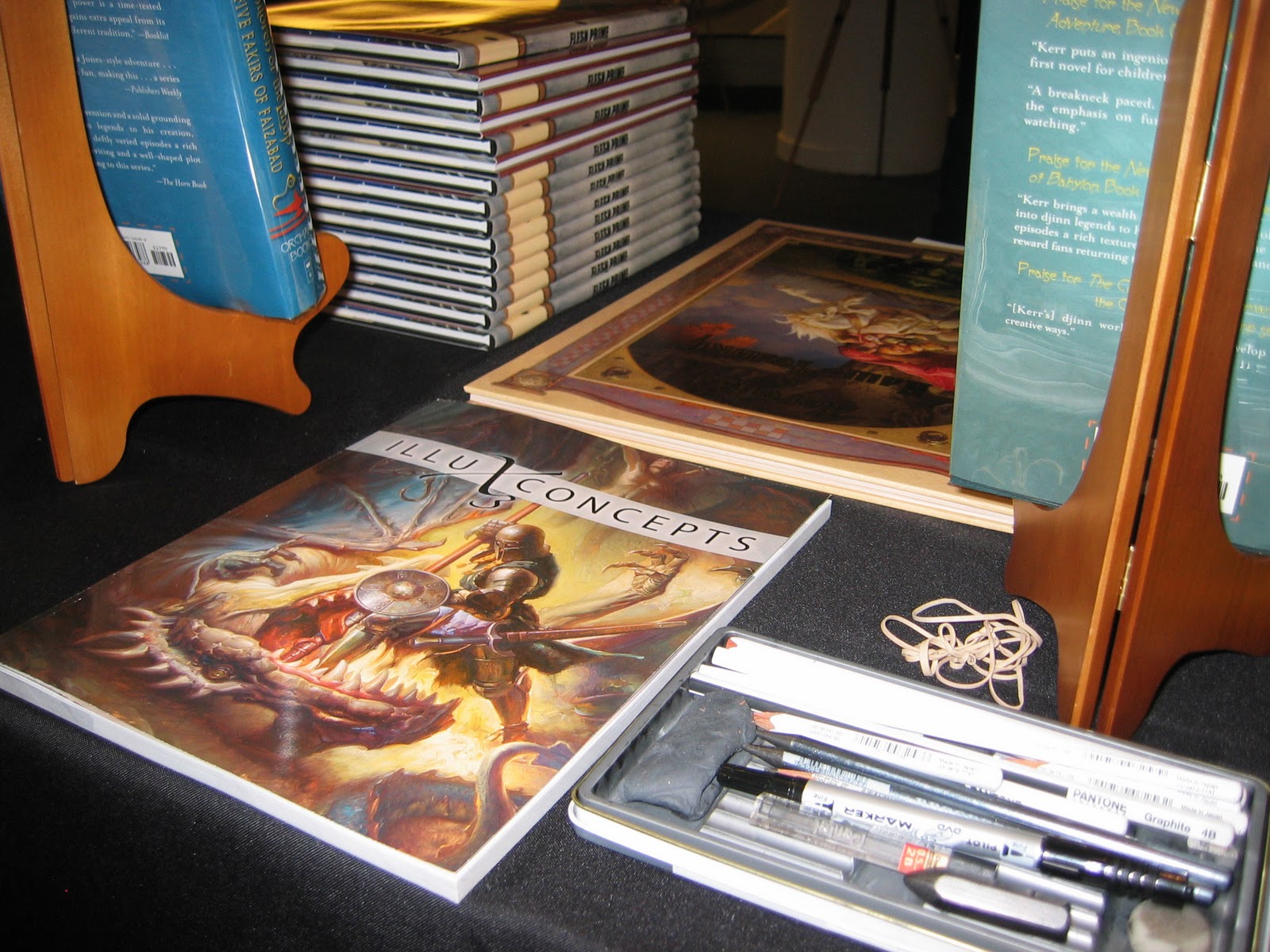
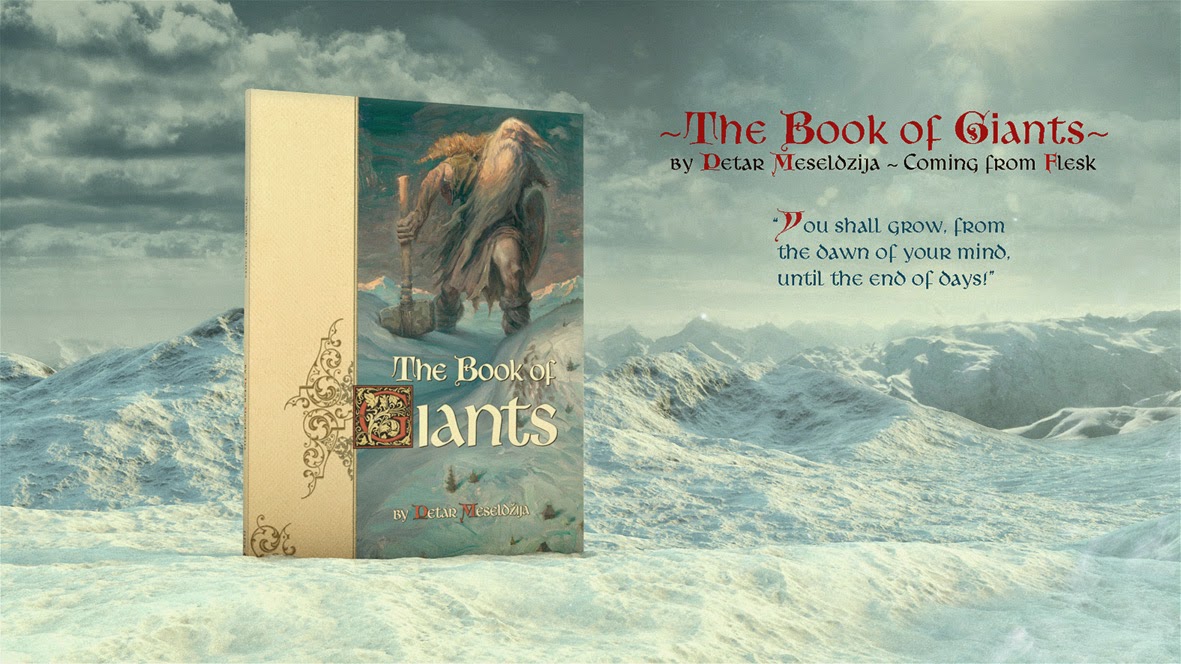
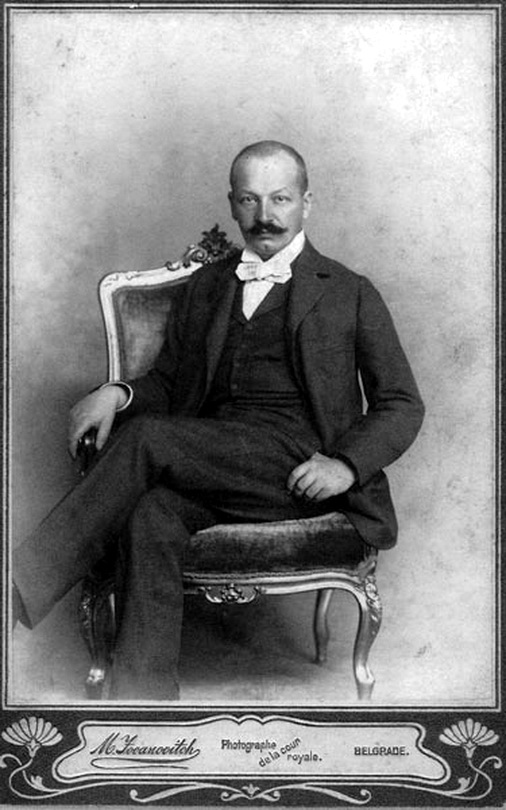
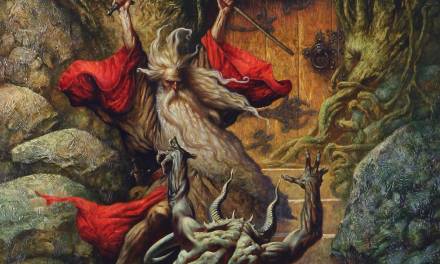
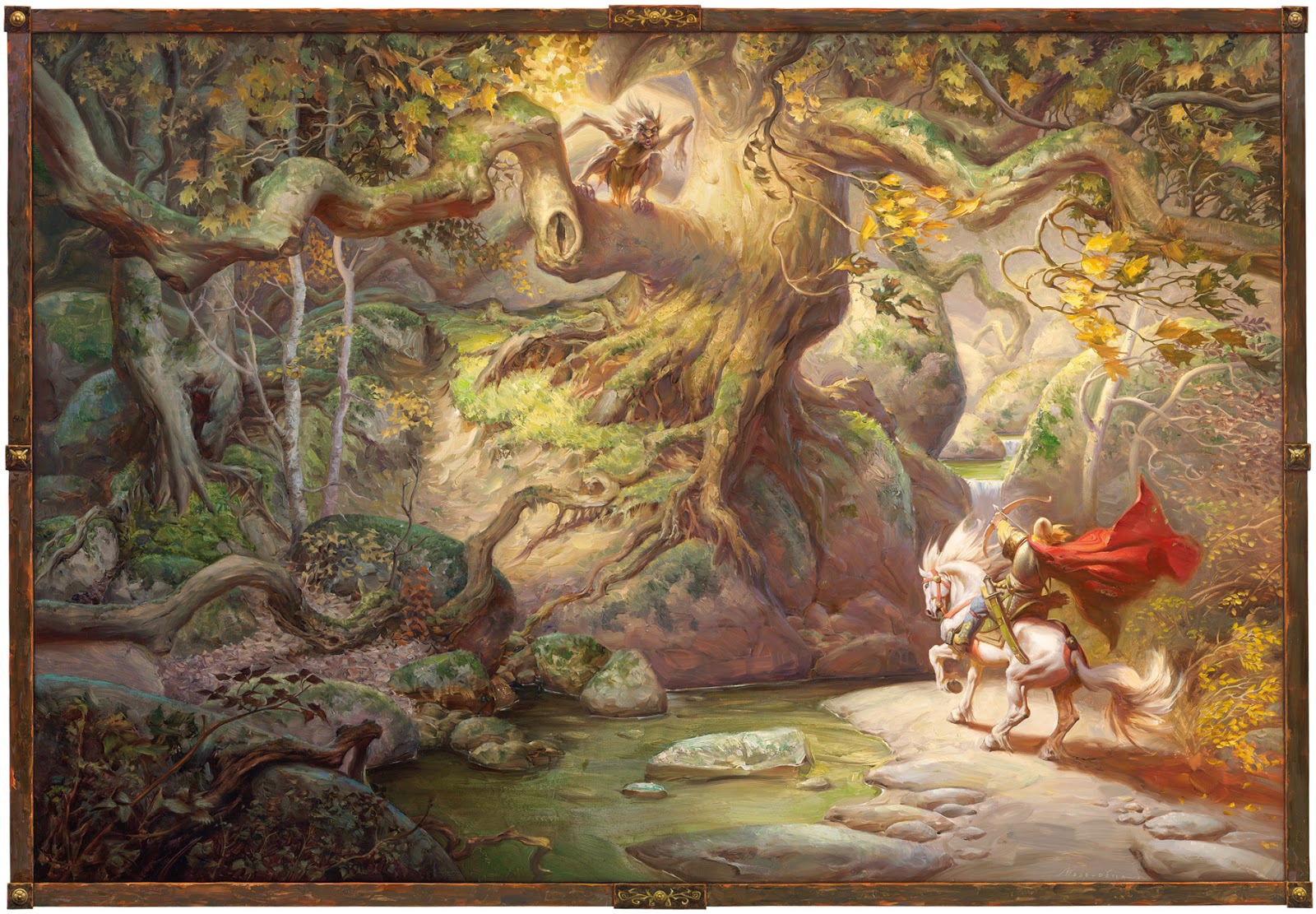

amazing!
I was hoping that someone would post highlights from your lecture but the actual script – WOW! THANKS Petar!
P.S. Great Photos!
Very interesting read, thanks Petar!
One day I'll manage to walk through IlluxCon. Look out for the guy with the drool-catching bucket.
For now a printout of that script will be very handy. Thanks!
Can't waut for the next part either!
I don't have a proper vocabulary to express my gratitude for all that you've just shared, Petar. It makes the most sense in the world for me, as you help me to realize that everything that I think and (specially) feel about art really makes sense in a spiritual sense… what I feel about what I wanna achieve and develop through fantastic art is not that crazy, after all! ;^)
How nice to see the “same” reality as mine, under the perspective of a master such as yourself. I say the “same” because, even if you are many, MANY lightyears away from me in technique, there are many things that unite us, such as the sensibility – even if you are a lot more sensitive and wise than me! But you see… that is what gives me hope to follow my heart, and confidence to walk the path that art is leading me through.
Just wish we can talk someday, if it's not much of a bothering for you!
All my best wishes from Brazil,
Raf
Thank you so much sir for your tremendous insights. I especially appreciated your comparison of creating art to religion. In reality they are almost one in the same.
I hope that I will be able to come to Altoona in 2012 for IlluxCon 5. Maybe then I'll get to meet you in person! Until then, thank you for sharing these great inspirations.
-Will
Rafael – It always pleases me to know that my humble words (and pictures) can inspire, help and give hope to others to follow their own heart, path, or dream. Thank you for being honest!
Will – If you come to Altoona next year, I will be happy to meet you there.
Thank you all, guys!